Built-in wardrobe
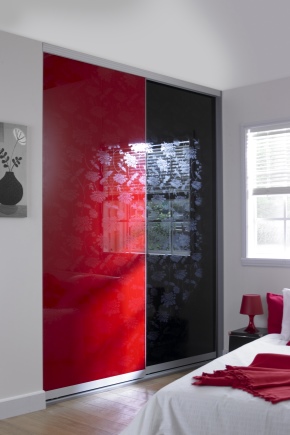
The built-in wardrobe is a stylish and convenient solution for storing your wardrobe. It not only complements the interior, but also helps to correct some flaws in the layout of the premises and optimize the space in small apartments. When installing a wardrobe, a previously empty niche in the wall becomes a functional space, freeing up several free meters for playing in the children's room or morning exercises in the bedroom.
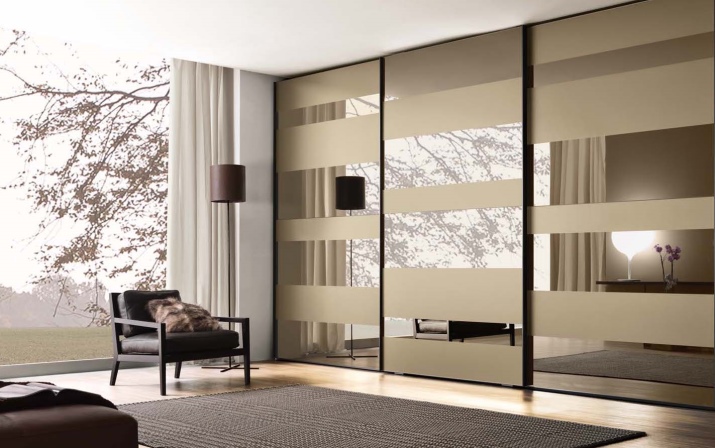
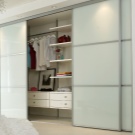

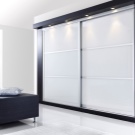
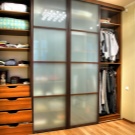

Features and Benefits
As practice shows, built-in furniture shows itself better in operation compared to cabinet furniture. In particular, the wardrobe has the following advantages:
- occupies the space in the room that is difficult to organize in any other way. The gaps between the walls, which appeared during an unsuccessful redevelopment or were initially laid during construction, turn into a convenient place for storing things, while not a centimeter of a useful metro-room is lost;
- costs less than a cabinet cabinet. The walls and ceiling of the room form most of the sides; additionally, only doors and shelves need to be organized. Even if the walls are also planned to be trimmed with wood, you can choose cheaper materials, since they will still not be visible, and in terms of service life they are not inferior to expensive ones;
- has more capacity. The sliding wardrobe should definitely occupy the entire niche from floor to ceiling so that there are no gaps between the upper edge of the door and the ceiling. Due to this, the storage space increases in comparison with cabinet cabinets, which are never installed as tightly as possible to the ceiling. For the same reason, the built-in cabinet is more convenient for cleaning, since dust does not accumulate in a hard-to-reach place under the ceiling;
- can be arranged in any part of the living space, be it a corridor, a bedroom, a nursery or a balcony. The variety of materials and models allows you to mount it even in the bathroom, for storing towels and cosmetic products. The main condition is the presence of an opening or a niche, the depth of which can be much greater than the depth of the shelves of an ordinary cabinet ;;
- the built-in wardrobe is easy to assemble with your own hands. The design of such a piece of furniture is quite simple - anyone who has the minimum skills of a carpenter can handle it;
- fully meets the needs of a particular room. You can organize the interior space in any way in accordance with the purpose of the room;
- equipped with a sliding mechanism. Thanks to this door opening system, the sliding wardrobe can be installed in a narrow and small-sized opening. In order to get or remove things, there will be no problem. Also, the sliding mechanism is quieter, the door travel is very soft (convenient and safe for children), and the service life is longer than that of suspension mechanisms;
- allows you to use any design, including one that visually enlarges the space. For example, models with light colors or with fully mirrored doors will make any room more spacious and larger.

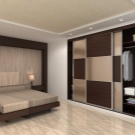

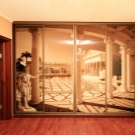
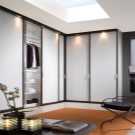
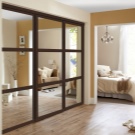
You can even install such cabinets in a nursery, because the glass is covered with a reliable protective film like laminated glass units. Their peculiarity is that with a strong impact, it will crack and remain inside the film, without scattering into fragments.
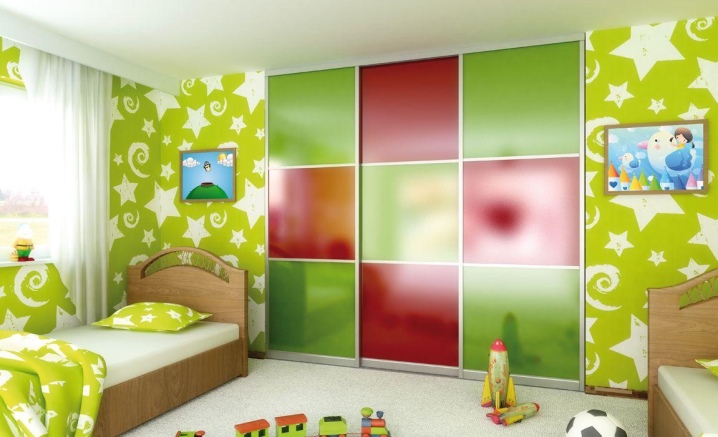
In case of renovation of the premises, it is enough to change the design of the doors so that the cabinet will organically integrate into the new interior.
Along with numerous advantages, built-in wardrobes have several drawbacks.
- Firstly, sliding doors cannot be opened at the same time, like swing doors, because the doors will necessarily be shifted to one side or in the middle. Eo can become a problem when choosing an outfit, since it will be impossible to cover all things with a glance at once.
- Secondly, some houses of the old foundation differ in ceiling heights from 3.5 to 5 meters, which does not allow the installation of sliding wardrobes in them, even if there is a niche suitable in width and depth. Such a cabinet will turn out to be gigantic in size, and you can only get to the things on the top shelf from a stepladder.
- Third, ensuring the correct geometry of the wardrobe can be challenging. Walls, floors and ceilings are almost never completely flat, and the precision of processing furniture parts implies perfectly straight lines, so the cabinet is curved. This defect is not noticeable to the eye, but it affects the service life of furniture mechanisms, which are actively worn out from walking along the wrong path.
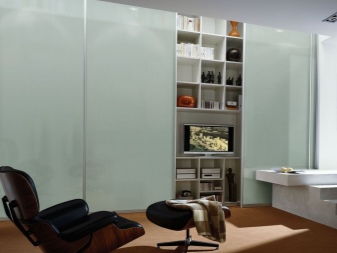
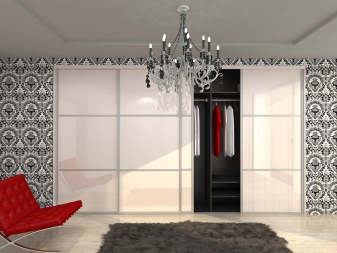
Models
The variety of models stands apart among the advantages of built-in wardrobes. Among them are: corner, radius, built into the wall, wardrobe.
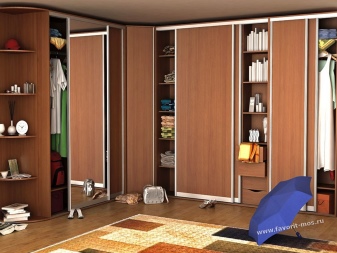
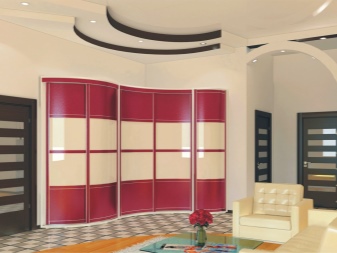
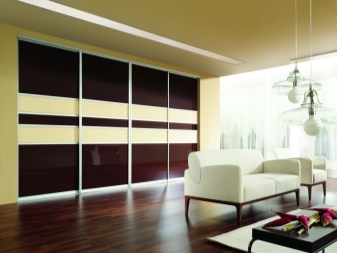

Built into the wall
Laconic furniture classics. Due to the fact that the base of the cabinet is formed by the walls, ceiling and floor of the opening in the wall, most of the structure has been abolished.
To install such a cabinet you need a minimum of measurements - the distance from the ceiling to the floor and from the wall to the wall. Custom-made doors and shelves will be made in a few days, and any head of the family will be able to mount this "constructor" in a couple of hours with interruptions.
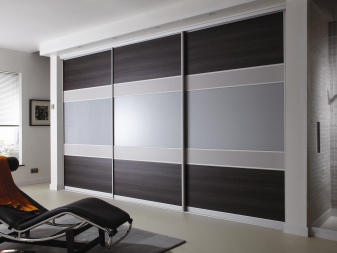
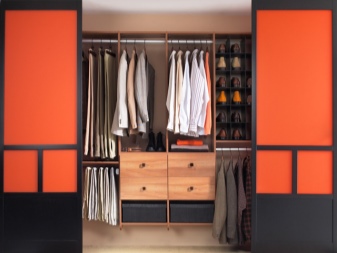
The color and materials of the doors are very variable. Both fully wood or mirrored structures are provided, as well as their combination. Also, the doors can be glossy or matte, with or without decor.
Depending on the size of the niche, the number of doors varies from two to five.
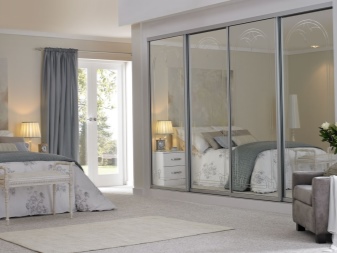
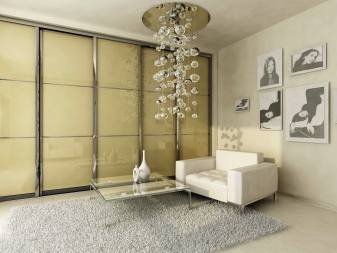
Internal filling can be varied: shelves, bars and hangers, end hangers, drawers, laundry baskets, soft modules.

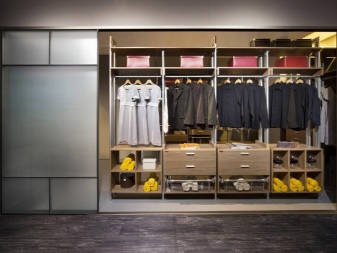
Easy to install in your chosen location, whether it is an opening less than 100cm wide, 3 meters wide, or more than 4.
Angular
Unlike the standard solution, it has several types:
- figurative form. It is a structure consisting of two halves, which are located along the walls and are combined in the middle at an angle. Most often it is 90 degrees;
- triangular shape or diagonal angular. Such a wardrobe, as it were, “cuts off” one corner of the room, and is closed by a facade without bends. Suitable for small rooms and apartments with non-standard layouts;
- trapezoidal shape. Ideal for large rooms with original layouts. Trapezium wardrobes are a beautiful and spacious format that has many transformation options.
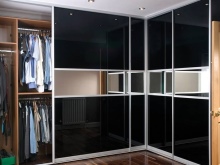
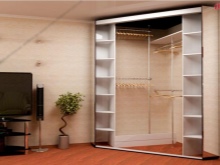
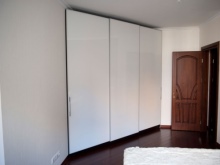
Radial
Radial or radial cabinets are elegant and modern models that represent a worthy alternative to straight forms. They are distinguished by a smoothly curved facade, due to which the furniture looks interesting and unusual. But this complicates the design, which means that the cost increases.
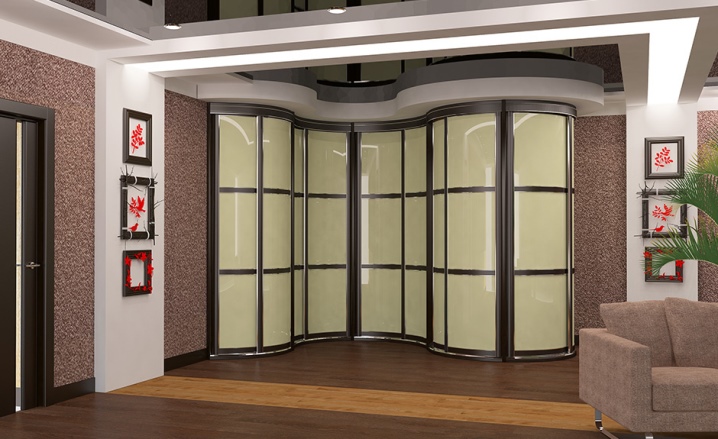
In terms of spaciousness, radius cabinets are not inferior to wall or corner cabinets. Their content is also variable, but the design is limited by the characteristics of the materials used. Glass fragments are very expensive, and mirrors are not suitable at all. Even a slight curvature gives a distorted image, so it cannot be used either for its intended purpose, or to visually increase the space.
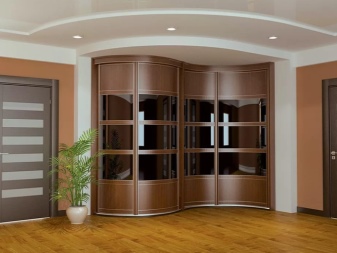
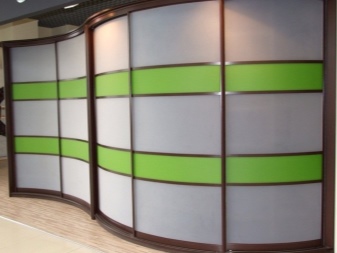
Wardrobe closet
A built-in wardrobe is the most practical, convenient and modern way of storing things. The only condition for its arrangement is the presence of a large space, which can be fenced off with doors and additional partition walls, if necessary.
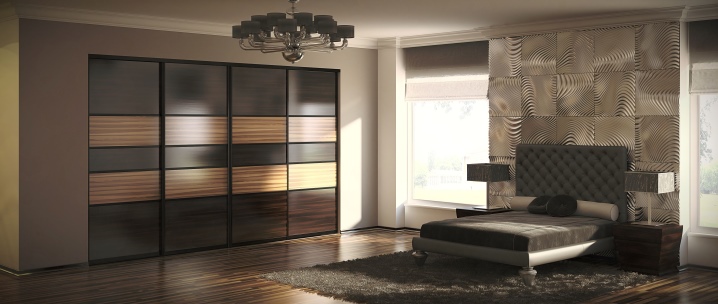
Dressing room advantages:
- Replaces bulky wardrobes and dressers.
- You can store all your wardrobe items in one place.
- Suitable for storing textiles and seasonal items besides clothes and shoes.
- Extends the life of things due to the fact that they are stored correctly.
- The space is used 100% from floor to ceiling, which is not possible with cabinet furniture.
- It is convenient to change clothes, as the dressing room can be equipped with good lighting and full-length mirrors, and all things are in one place.
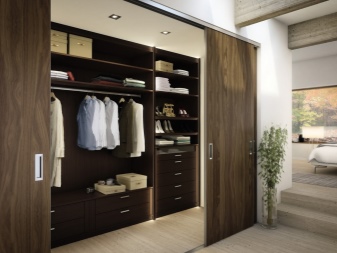

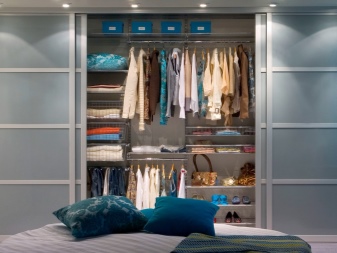
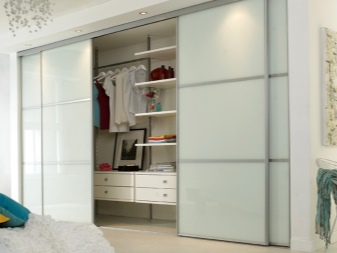
Design
The appearance of the front of the wardrobe depends on several factors. First of all, this is the general style of the room and its purpose, and secondly, the materials from which the cabinet is made.

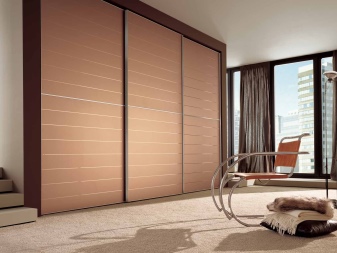

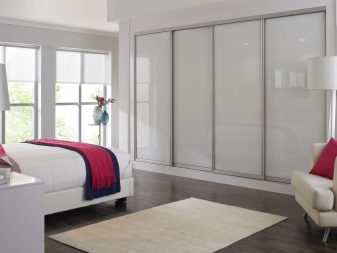
Chipboard
Chipboard is a very common material in furniture making. It is cheaper than natural wood, durable, looks good in the interior.
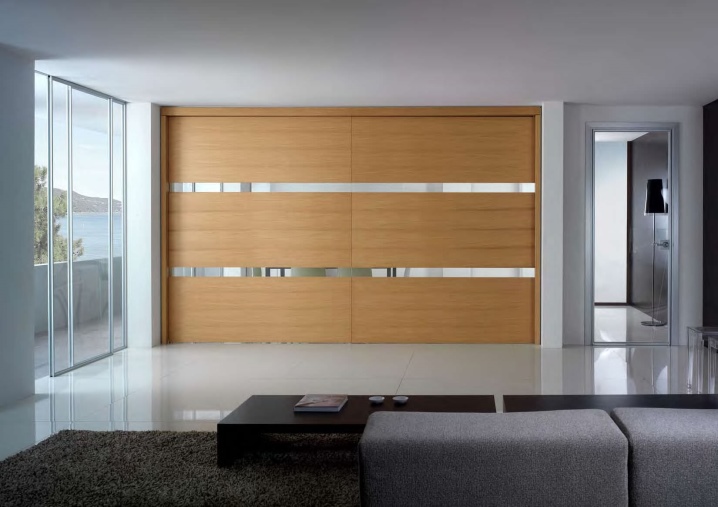
In the process of making furniture, chipboard is covered with a multi-colored laminated film, which allows you to choose facades of any color, even imitating the texture of natural wood. Options in bicolor or several different colors are possible, the presence of mirrored doors.
Furniture made of laminated chipboard is difficult to process, so there is no decor and elegant details on it, but availability and quality compensate for this shortcoming.

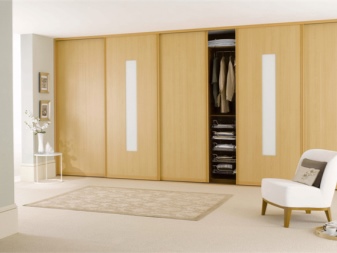
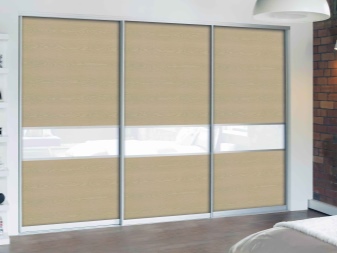
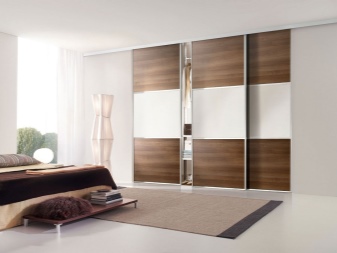
MDF
Softer and more environmentally friendly than chipboard, a material that is easier to process, embodying any idea. Its surface can be glossy or matte, bright, pastel, like natural wood. Also, MDF can take various forms, which allows you to make stylish and original models.
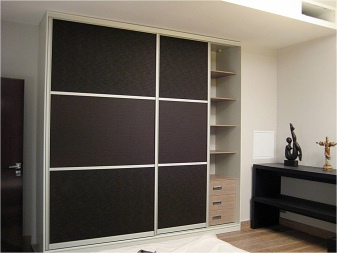
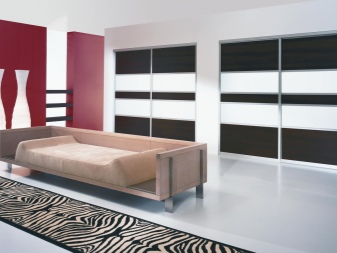

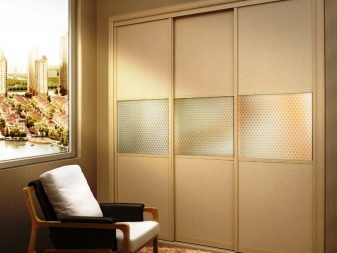
Natural wood
Solid wood furniture is the most expensive, durable, easy-to-use, and often also the most beautiful. The wood base made of oak, ash, pine is ideal for applying subtle and elegant decor. It can be painted, treated with varnish and colors, combined with mirror and other surfaces, supplemented with interesting fittings.
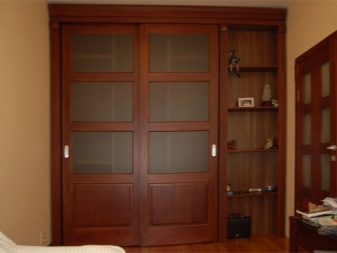
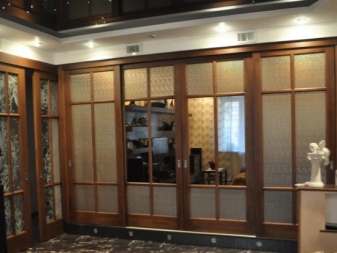
Mirror and glass
Mirrored cabinet doors are practical and convenient. The front of the cabinet can be either combined or completely enclosed by a reflective surface
Such options look advantageous in spacious, light rooms, making the space airy and wide in small rooms or hallways, visually increasing them.


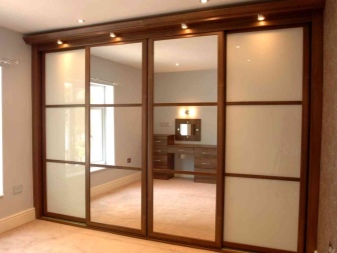
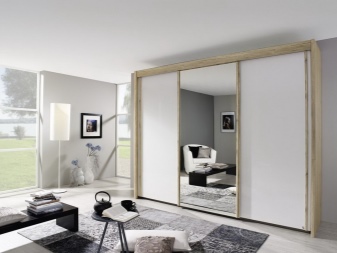
Glass is combined with wood, MDF panels and laminated chipboard, matte and plastic elements. A separate type is the stained glass decoration of the glass facades.
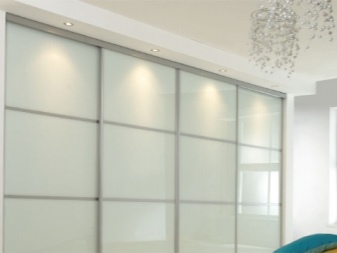

Stained glass can be ordered from the master, made with your own hands using acrylic paints on glass and brushes, or you can use film.
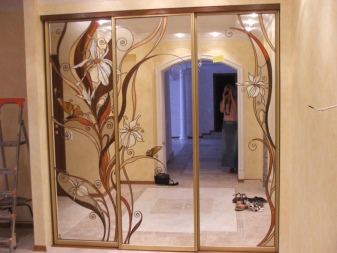
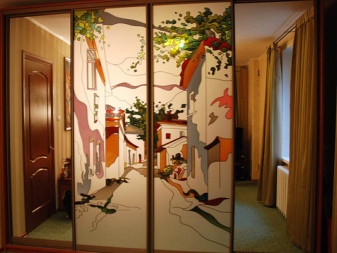
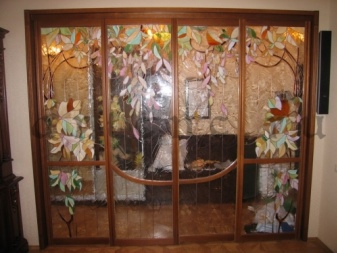
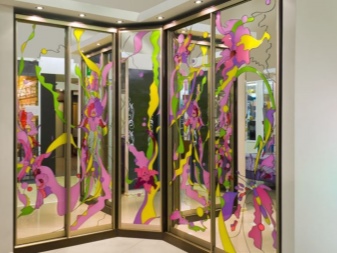
The use of textured glass is also common. Corrugated matte surfaces look more strict, laconic and elegant, which makes them versatile.
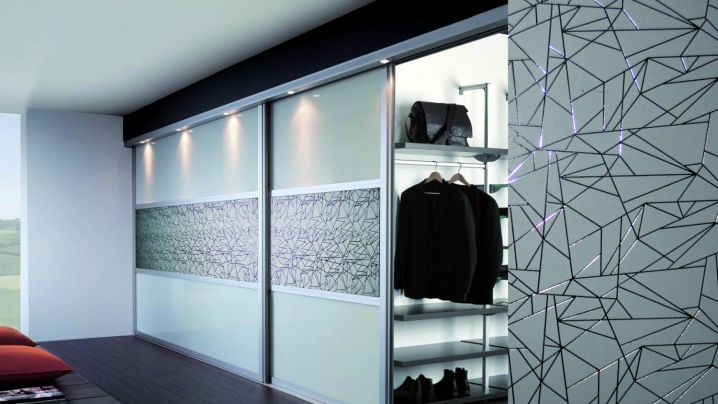
Sandblasting drawing
The essence of this technology is that a pattern or pattern is applied to the glass surface using a high-pressure air jet and fine-grained sand. Restrained and at the same time, elegant decor is suitable for an interior in which discreet beauty is preferred.
This technology is expensive and not feasible at home, but it looks impressive and is applied for centuries. Even grandchildren will be able to boast of interesting furniture.

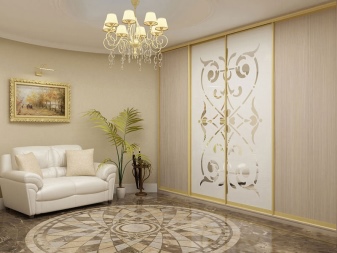
Photofacade
Printing images on objects is a popular technique that has spread from T-shirts and mugs to larger items. Today, any image can be placed even on a wardrobe.
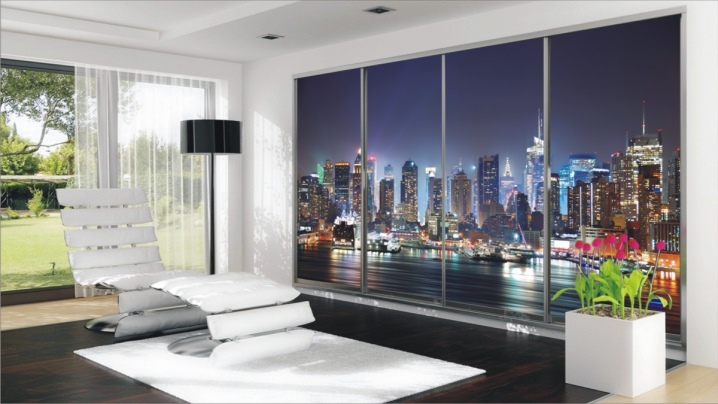
The choice of a picture directly depends on the purpose of the room: a panorama is suitable for a living room, a reproduction of a famous photo or painting for a bedroom, gastronomic motifs will look appropriate in the kitchen. In this case, the surface can be either glossy or matte.
Thinking over the design of the photo facade, it is important to take into account that large images are best left for large and medium rooms, and small rooms require small and discreet images.
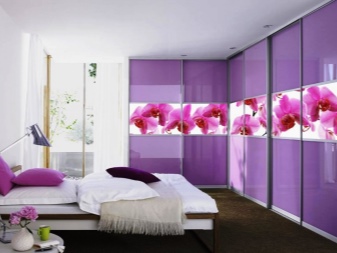
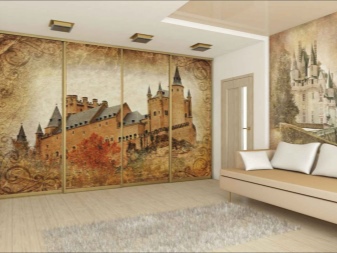


Natural materials
Fashion trends call for the use of materials such as bamboo, leather and rattan in furniture decoration. They perfectly combine with each other, are not capricious in operation and are infinitely elegant.

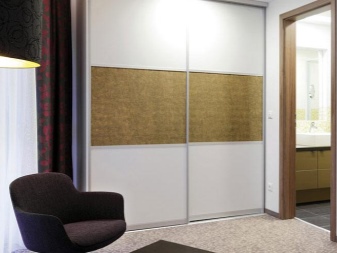
Such furniture can be combined with any interior, however, it requires harmony and compliance with its expensive appearance. Cheap furniture and stale repairs are not the best neighbors for a cabinet made of natural materials.
Combined facades
Any combination is possible: glass and MDF, mirror and corrugated matte surface, mirrors and doors with a pattern, wood and glass fragments, and many other options. Combined models allow you to combine several ideas into one creative idea and look organically among other design solutions.

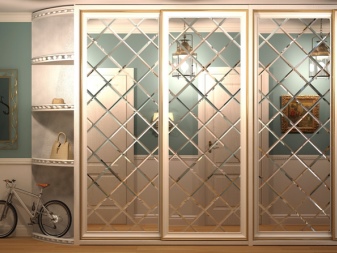
Styles
The variety of design solutions can be dictated by the main style theme in the interior.
Classic style
A characteristic feature of the traditional interior design is the absence of cheap, short-lived things. Natural wood, uniformity of shades is welcomed. Furniture can be decorated with fittings that imitate precious metals, antiques, majolica.
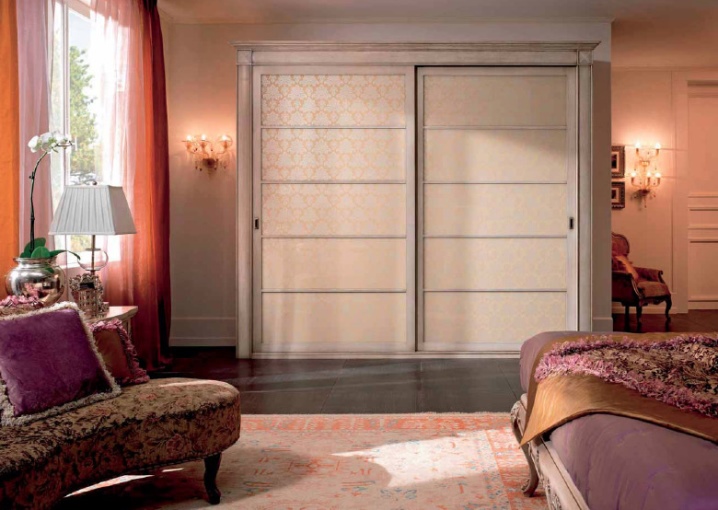
The classics include all branches of Art Nouveau, Renaissance, Baroque, Rococo, English style, Romanticism and Gothic.
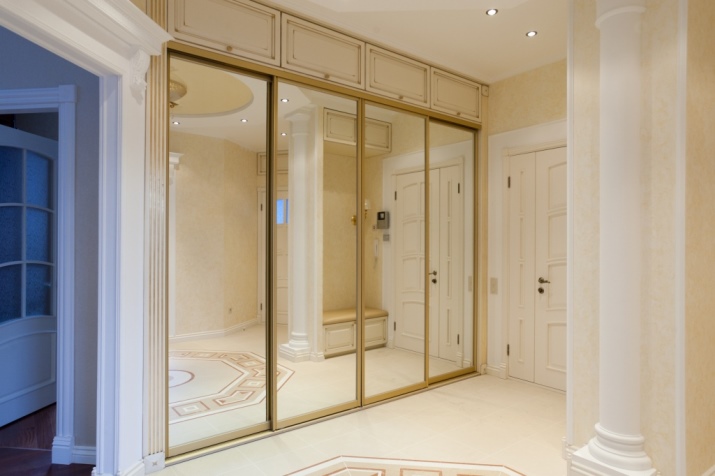
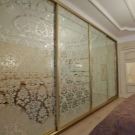
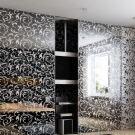
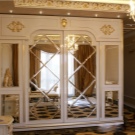

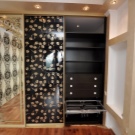
Ethnic
Implies design in the spirit of a particular ethnic setting.
At the same time, everything in it should be harmoniously combined. It would be a mistake to think that a pair of rice paper lamps will turn the bedroom into the embodiment of Japanese style, and the drawings of totems on the doors of the wardrobe will set the African style in any room.

Antique
Recreation of Greco-Roman grandeur in the interior requires a lot of space, expensive natural materials. When ordering built-in furniture, you should give preference to laconic forms. The main materials are natural wood and bronze. Carving, gilding, mosaics, decoration with expensive fittings or imitation of precious metals are acceptable.
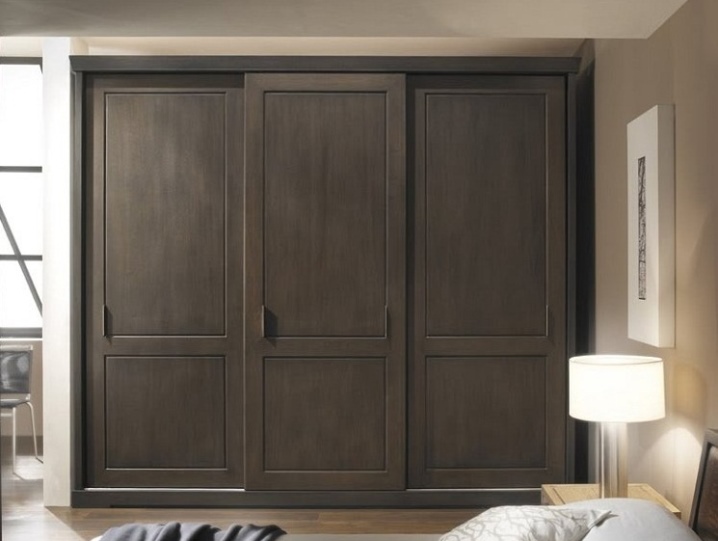
Colonial
It is located at the junction of European comfort and the exoticism of the East. This style implies bright combinations, the absence of minimalism, large spaces, and a non-standard layout. Distinctive features of the furniture are the original design of individual parts: fittings, carvings, mosaics, stained glass, patterns. Prevailing colors: gold, chocolate, terracotta, olive, shades of blue, yellow, red.
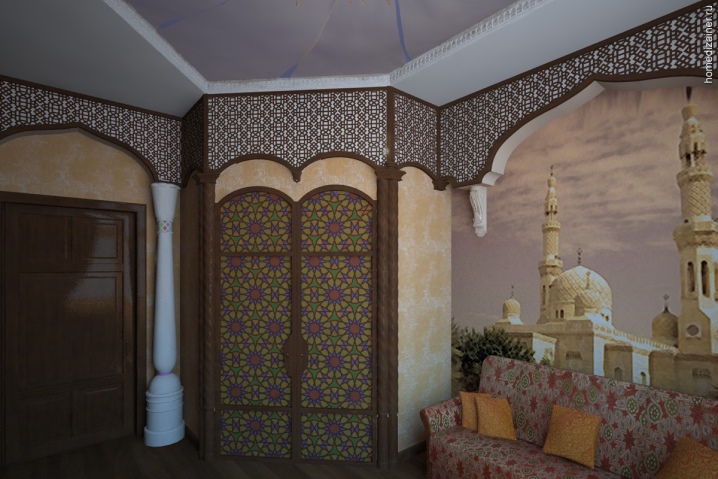
Modern
Includes:
- Art Deco - strict geometry, smooth and shiny surfaces, luxury, expensive materials, ethnic and animal prints. The main range is black, white, silver, gold, ruby, emerald, and other noble shades;
- country - floral motifs, romance, rustic charm, purity, natural materials, primitive, rude furniture design;
- minimalism - conciseness, simplicity, clarity of the interior composition. Refusal of excessive comfort, furniture made from natural materials, simplicity of lines, geometry, light color palette;
- loft - open spaces, unusual accessories, a combination of old and new in the interior, industrial character of the furnishings. Loft-style furniture is most often a combination of antiques and minimalist modern things, such as aged wood and chrome;
- Provence - country music with a French motive. There are floral ornaments, ruffles, an abundance of textiles, forged items, ceiling wooden beams, figurines, warm pastel shades. Provence style furniture is artificially aged, with scuffs, patina, wood carvings, elegant fittings. Natural materials and natural texture prevail;
- hi-tech - characterized by simplicity of lines, laconic colors, the presence of glass and chrome surfaces, minimalism of furnishings, glossy elements and clear forms.

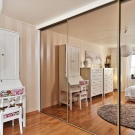
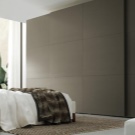
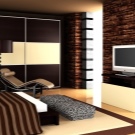
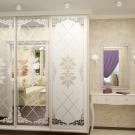
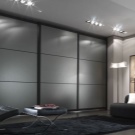
Mixed
It combines features of different styles under a common name - eclecticism.

Color solutions
The palette of possible shades is varied and depends on the source material.
Furniture made of chipboard and MDF can be made in any color and any color combination.
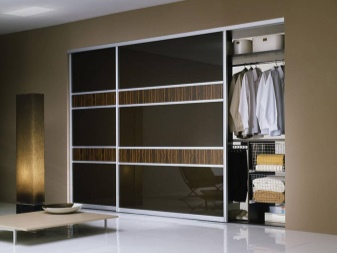
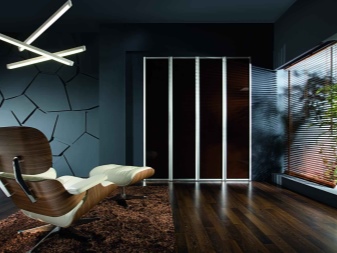
Natural materials are presented in noble light, beige, brown, chocolate shades, mahogany and wenge.
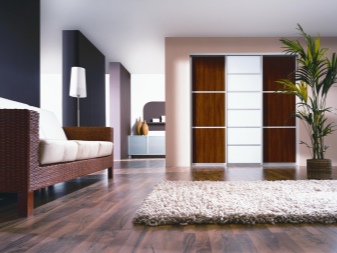
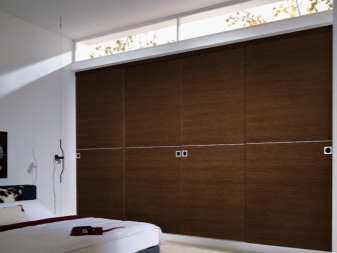
Plastic and glass also differ in the gradation of shades within the same range. Moreover, they can be both glossy and matte, with textured patterns or with photo printing. All mirror surfaces can be purchased with sandblasted patterns and stained glass inserts.
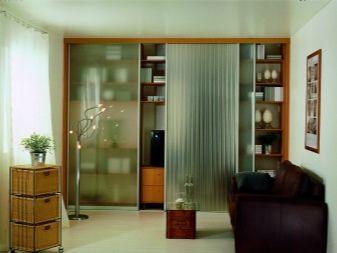
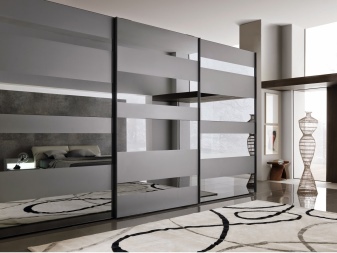
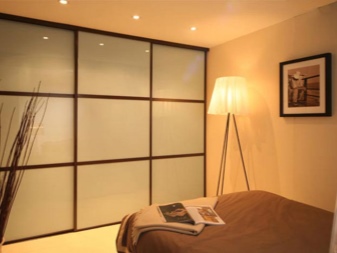
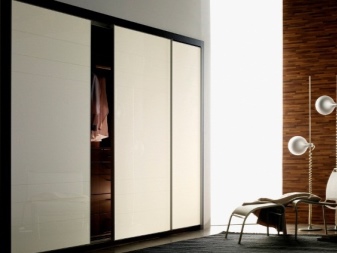
Internal filling
The convenience and spaciousness of the storage system is ensured by its internal filling. What will be the "filling" of the cabinet, in turn, determines the purpose of the room in which it is installed. Options include shelves, hanger bars, end hangers, baskets, drawers, soft modules and textile boxes.
All accessories can be retractable or free-standing.

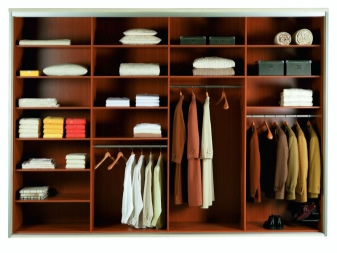
For the living room
In a place like a living room, the main role is, of course, the front of the cabinet. But the inner content is no less important. It can have shelves for books, drawers for documents, various compartments for small items, a niche for installing a safe or stereo equipment, a built-in bar, a mini-refrigerator.
Competent organization of the space in the closet will help rid the living room of numerous cabinets, nightstands and dressers.
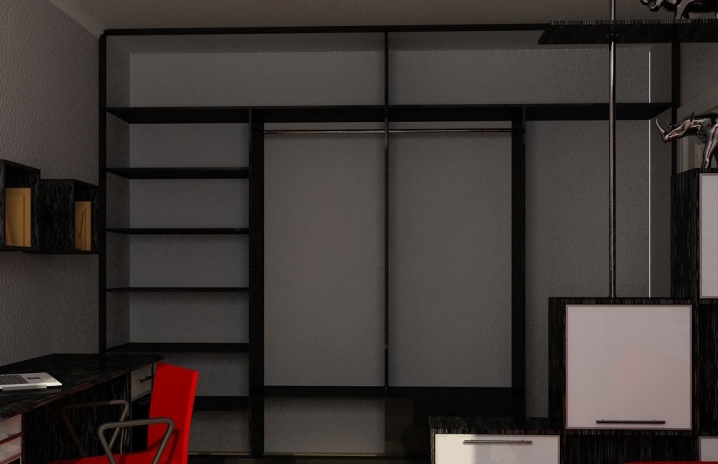
For bedroom
Behind the spectacular, but not too flashy facade of the wardrobe in the bedroom, there should be convenient drawers for storing bed linen, pillows, blankets, and towels. There should also be shelves and rails for clothes, a place for an ironing board and a basket or textile box for laundry intended for washing.
It is convenient to organize the space as follows:
- lower compartment - for storing shoes, travel bags, sports equipment, such as rollers and skates;
- the main part - for storing household items, everyday clothes and outerwear;
- mezzanines - for rarely used things and their seasonal storage.

These three areas should be equipped with smaller items: drawers and shelves or baskets for laundry, socks, hangers, hangers and hooks, shoe shelves, a niche for an ironing board or a steam generator.
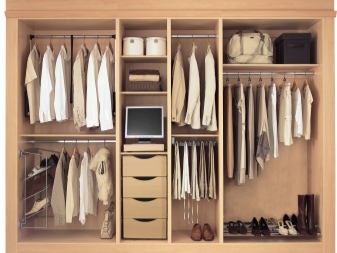
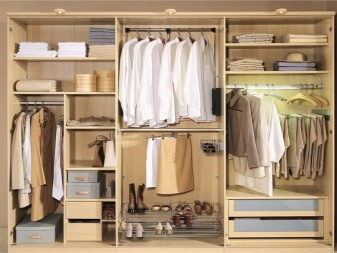
For the nursery
If children have a separate room, there must be a closet for storing things in it. It is advisable to divide the inner space into zones in which the child himself can take things and objects, and zones that are accessible only to parents. This is necessary so that all children's things are stored in one place, but not used by kids for other purposes.
It can be divided into compartments according to the same principle: shoes, casual clothes, outerwear. In addition to shelves and boxes for things in the lower compartment of cabinets for children's rooms, you can install textile boxes, paper boxes, baskets for storing games, toys, sports equipment.
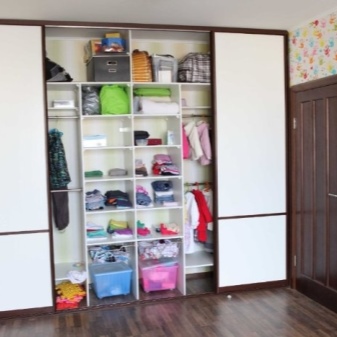
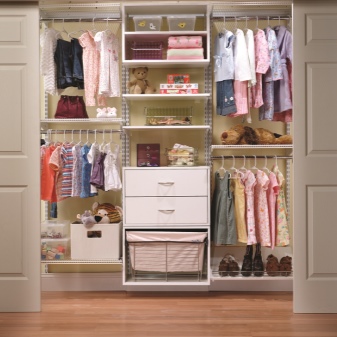
For the hallway
The sliding wardrobe in the hallway has long ceased to cause associations with an inconvenient built-in wardrobe from Soviet-type apartments.
Re-equipping this space, you can get a spacious modern storage system, which will fit shoe shelves, compartments for outerwear, shelves for gloves, hats, scarves, and other seasonal trifles.
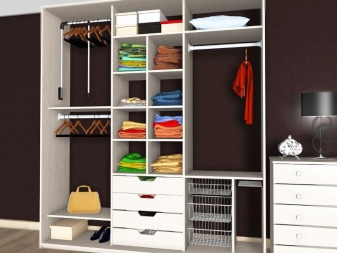
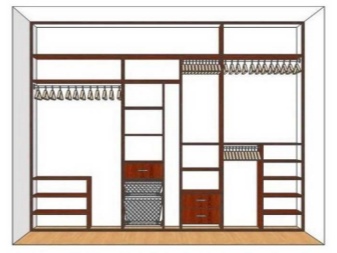
From the outside, the wardrobe in the hallway must be equipped with at least one mirrored door.
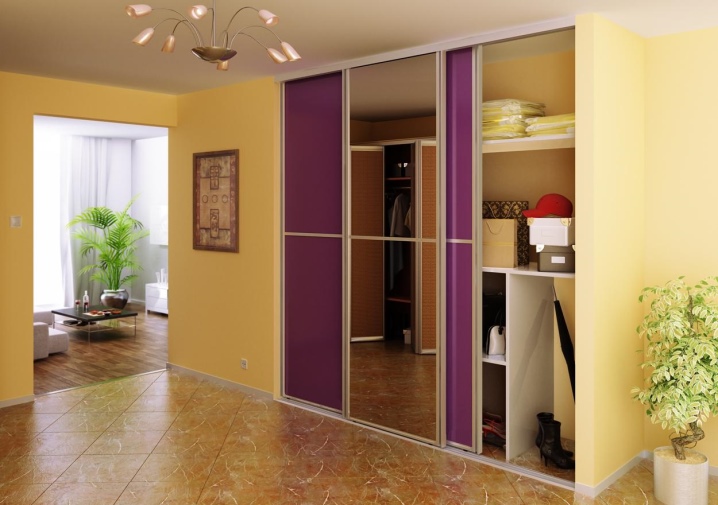
A built-in wardrobe on the balcony or in the bathroom can do with a minimum of elements of the internal device. There are enough shelves and drawers for storing canned food on the balcony, and jars with a strategic supply of care products in the bathroom.
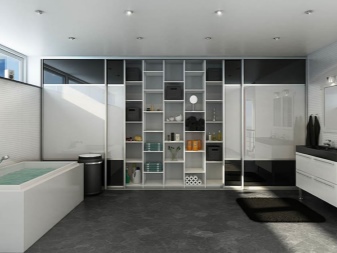

Selection Tips
A built-in wardrobe is almost always a custom-made product according to individual sizes. The height of the ceiling, the width, and the depth of the niche that the cabinet will occupy in the future play a role here.
In order for the furniture to serve for a long time, be practical, and look beautiful in the interior, you should adhere to the following recommendations:
- Consider the style and design of the room.
- Think over the internal content, taking into account the fact that the number of things will increase over time. With the help of hangers, boxes and shelves, it must be organized so that space is spent sparingly, and there is a stock left;
- Pay attention to the niche walls. The top, back and side panels are formed by the walls of the room. It is important that they are able to support the weight of the internal accessories in the cabinet. To do this, they must be sheathed with MDF panels or wood, but not drywall. It is too soft, flexible, and simply cannot withstand the load from the number of shelves and things;
- Study the door mechanism carefully. Today, two types are in use: a metal frame, inside which doors move on wheels, and a monorail, along which special rollers go. The second option is more expensive, but in operation it manifests itself better and lasts longer.
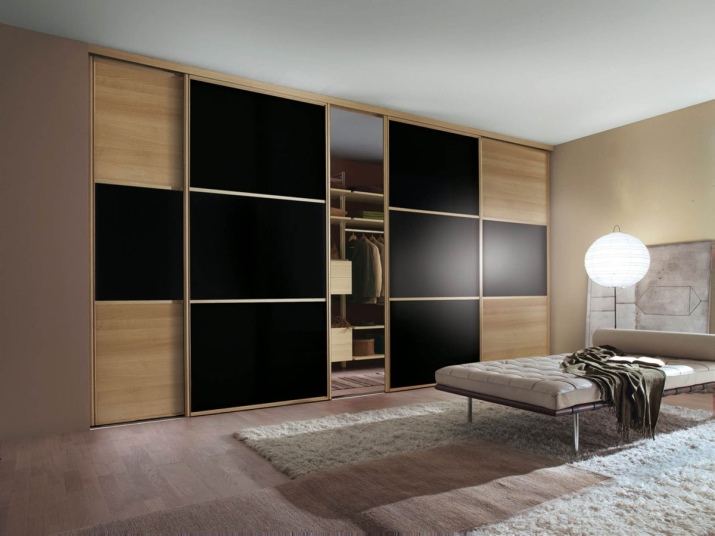
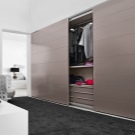
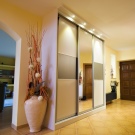
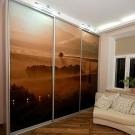
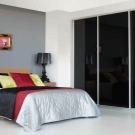
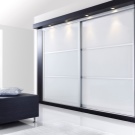
Material plays an important role. In most cases, chipboard is the most suitable. It is also strictly worth considering what the wheels and monorails are made of.
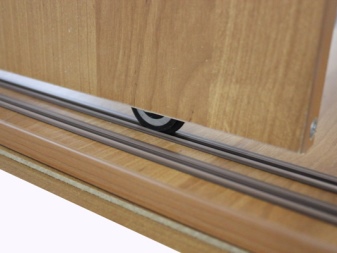
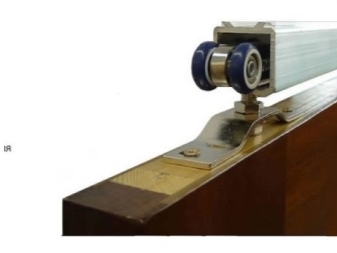
The rollers of the undercarriage should not be made of plastic (the period of trouble-free operation is a year), but of metal or with a Teflon coating.
The width and weight of the door affects the service life of the undercarriage. The heavier the material, the faster it wears out.

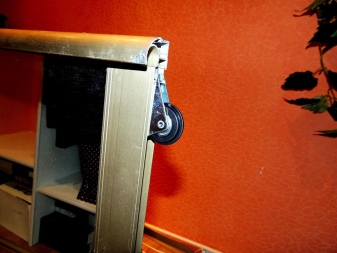
It is necessary to study what the upper and lower profiles, along which the doors "walk", are made of. Wooden and combined are rare, steel and aluminum profiles are much more common. At the same time, steel is the most reliable and durable, although not the most aesthetic.
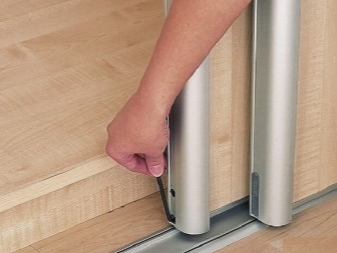
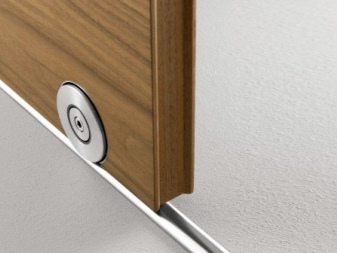
We must not forget about safety. Especially if the wardrobe has mirrored doors and is installed in the children's room. Glass and mirror surfaces must be covered with a high-quality film, which will prevent fragments from scattering on the floor if the mirror breaks;
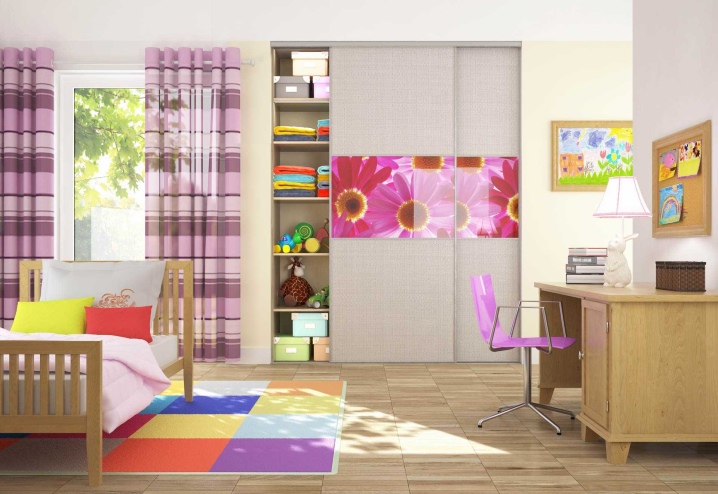
Accommodation options
The built-in wardrobe is convenient in that it can take any chosen place in the house. The easiest way is to install it in a niche in the wall. The greater its depth and width, the more spacious the inner space of the cabinet will be.
Such furniture will perfectly fit into the bedroom, hallway, children's room.
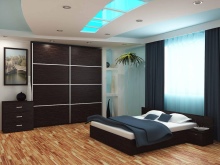
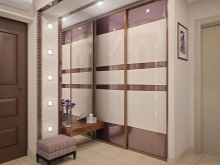
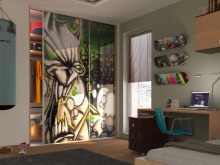
A functional wardrobe installed in the hall or living room. In it you can not only store things, but also have a mini-bar, library, TV-zone.
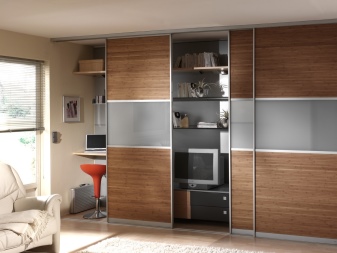
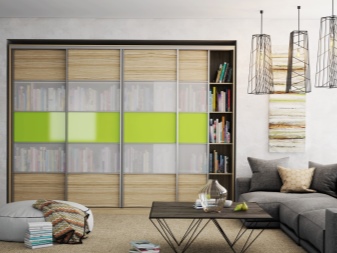
The wardrobe is often taken out onto the balcony or loggia. Thanks to a convenient door mechanism, it fits well into a narrow space without causing inconvenience, like wardrobes with swing doors. It is convenient to store seasonal items, pickles, preserves and preserves in it.

Building in furniture is a great option to save space in a Khrushchev building. Apartments of this type are characterized by small dimensions, adjoining rooms, narrow and long corridors or tiny hallways. For them, not only closed wardrobes are provided, but also options with open shelves, compartments for books and bed linen, and other accessories.

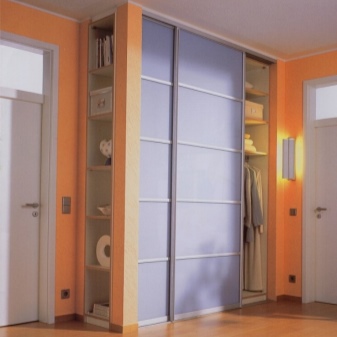
DIY installation and repair
The design of the built-in cabinets is simple enough to assemble and re-install all the parts yourself. Hardware stores offer a wide range of goods to help, and even enough materials to make them yourself. The required set includes chipboard or MDF panels, rollers, guides, shelf mounts.
Special care is required for the installation of custom doors with glass fragments or mirrors. Doors are installed last, after interior decoration, installation of shelves and additional walls for dividing the interior space into compartments.
Do-it-yourself wardrobe installation - see the video below for more details:
Reviews
Built-in wardrobes occupy a leading position in the number of custom-made furniture. They have established themselves as a comfortable, beautiful and functional part of the interior.
Among the positive aspects, they note the saving of space, the ability to adjust the layout of the apartment without resorting to major changes, and a beautiful design.
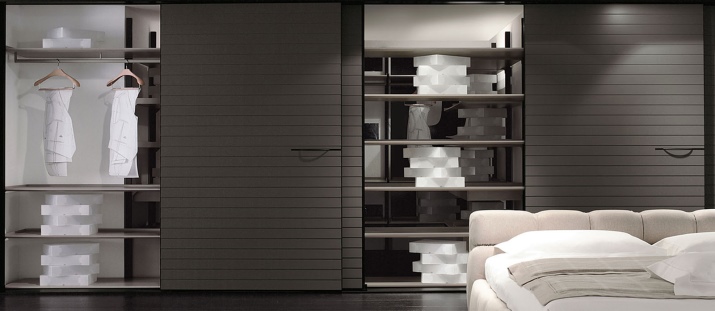
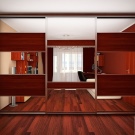
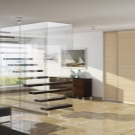
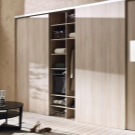
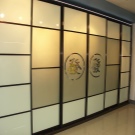
The negative aspects include the quick wear of the plastic rollers, and the need to frequently wipe the mirror surfaces from dust and fingerprints.













The comment was sent successfully.